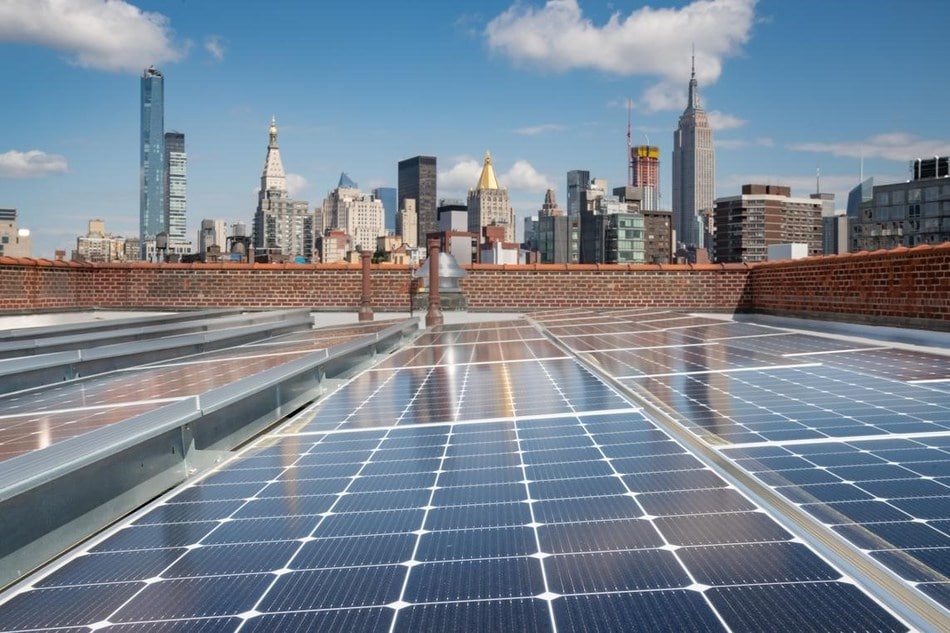San Diego-based Borrego said it will develop a 110 MW utility-scale solar project as part of the solicitation for large-scale renewables by New York State Energy Research and Development Authority (NYSERDA). The Rutland Center Solar 1 project will be Borrego’s largest development announced to date.
The award was one of 20 solar projects awarded as part of NYSERDA’s efforts to develop more than 2 GW of new renewable energy capacity throughout New York State. The Borrego array will be sited in National Grid territory in the north of the state, in the towns of Rutland and Watertown in Jefferson County.
Con Edison tallies customer solar
Con Edison said that customers in New York City and Westchester County, N.Y. completed 5,542 arrays in 2020 with a combined capacity of 44.77 MW. Utility customers have now completed more than 35,700 projects with a combined capacity of 322 MWs.
Among the five boroughs of New York City and Westchester County, Queens has the most customer solar arrays, 11,334. When it comes to capacity, Westchester is the leader with 83.75 MW. Customers in Queens completed the most projects last year, 2,064. The borough also added the most capacity, 13.35 MW.
Con Edison said that a typical residential customer with a 6 kW solar array can generate enough power to provide up to $700 in annual savings, helping reduce a bill by more than 60%. The company recently began offering solar installers and their customers a device called Smart ConnectDER, which allows a customer to avoid the cost of upgrading the home’s circuit breaker panel and excessive electrical boxes on the side of the house.
Mosaic notches milestone
Residential solar and energy-efficient home improvement finance firm Mosaic said it passed $4 billion in loans funded through the company’s platform. The company said that in 2020 it closed asset-backed securitizations of $222 million and $280 million, both of which were oversubscribed. The company said that multiple years of historical data has strengthened its relationship with capital markets, reduced its cost of capital, and allowed it to pass along lower rates to homeowners.
Cybersecurity handbook
Cybersecurity researchers at Idaho National Laboratory have published a book to help train employees at public utilities to recognize cybersecurity vulnerabilities and develop measures to defend their networks from increasingly sophisticated cyberattacks.
Countering Cyber Sabotage: Introducing Consequence-Driven, Cyber-Informed Engineering, was written by Andy Bochman and Sarah Freeman. It details INL’s approach to securing critical infrastructure systems like the electric power grid, oil and natural gas refineries, and water treatment facilities. The authors said that much of the technology responsible for controlling operations at many public utilities is decades-old and lacks modern defense capabilities. This makes them vulnerable to cyberattacks ranging from ransomware threats to significant service disruptions.
INL developed a think-like-the-adversary cybersecurity approach called Consequence-driven Cyber-informed Engineering (CCE). The method acknowledges the fragility of internet-connected technology and services. Instead of relying on traditional protection strategies like intrusion detection software or additional firewalls, INL’s cybersecurity approach uses engineering design principles to prevent top-tier cyberattackers from damaging or disrupting utilities’ most essential operations.
INL developed the CCE method over the last decade in consultation with leading government, industry and academic researchers. Beginning in 2018, Congress and the Department of Energy Office of Cybersecurity, Energy Security and Emergency Response provided INL with $20 million in funding to further develop the method. Additional support has come from the Department of Homeland Security and the Department of Defense.
Electric trash trucks
XL Fleet Corp. entered into a partnership with Curbtender, a provider of Under CDL refuse trucks, to jointly develop a series of battery electric (BEV) and plug-in hybrid electric (PHEV) commercial trucks for use in waste management.
The companies said they plan to develop and launch within the next year a battery electric refuse vehicle equipped with an XL Electric propulsion system and a Curbtender Quantum rear loader refuse truck body. The agreement also includes joint development of plug-in hybrid electric versions of the vehicle, as well as a range of Class 3 – Class 8 vehicle solutions for the waste management industry.
In late January, Romeo Power and Republic Services entered into a Strategic Alliance Agreement to develop Romeo Power’s battery technology for use in Republic’s electric garbage trucks.
The companies said that a single refuse truck travels roughly 25,000 miles annually and that the segment contributes around 1.4% of the transportation industry’s overall fuel consumption. That makes them an attractive application for electrification as well as a “high-impact opportunity” to drive decarbonization within the commercial sector.
XL Fleet provides vehicle electrification for commercial and municipal fleets in North America, including Coca-Cola, Verizon, and the city of Boston.
This content is protected by copyright and may not be reused. If you want to cooperate with us and would like to reuse some of our content, please contact: editors@pv-magazine.com.









By submitting this form you agree to pv magazine using your data for the purposes of publishing your comment.
Your personal data will only be disclosed or otherwise transmitted to third parties for the purposes of spam filtering or if this is necessary for technical maintenance of the website. Any other transfer to third parties will not take place unless this is justified on the basis of applicable data protection regulations or if pv magazine is legally obliged to do so.
You may revoke this consent at any time with effect for the future, in which case your personal data will be deleted immediately. Otherwise, your data will be deleted if pv magazine has processed your request or the purpose of data storage is fulfilled.
Further information on data privacy can be found in our Data Protection Policy.